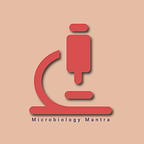History of Microbiology
The history of Microbiology began about 450 years ago. The initial focus was on infectious diseases and later it has been evolved to industrial applications. Many scientists have made significant contributions to the development of microbiology. The suffering of people from unknown diseases made these scientists work on infectious diseases.
It was only after the discovery of the microscope during the mid-1600s, that the key observations of cells were made. The cell was first discovered and named by Robert Hooke. After two decades, a Dutch merchant named Anton van Leeuwenhoek made careful observations of microscopic organisms from his self-made microscope, and he called them animalcules. Although he called them animalcules, what he saw under the microscope were protozoa, fungi, and bacteria.
During the 1600s, many believed in the spontaneous generation theory, which stated that living creatures arise from non-living matter (abiogenesis). This theory was first disproved by Francesco Redi by an experiment. In his experiment, he demonstrated that maggots arise from the eggs of flies, not from decaying meat. Later, many scientists explained the spontaneous generation theory for microorganisms, and some have disproved it by conducting various experiments. Though it was demonstrated that boiled meat broth did not give rise to microorganisms, there were still arguments for this theory.
During the mid and late 1800s, Louis Pasteur performed numerous experiments on the contamination of wine and dairy products. These experiments made him understand that if the bacteria could make the wine sick, they could also cause illness in human beings and animals. Pasteur had to disprove the spontaneous generation theory to bring his beliefs to light. Finally, he disproved the spontaneous generation theory with his swan-neck flask experiment. After this experiment, the arguments on spontaneous generation have come to an end. Pasteur proposed the germ theory of disease and said that microorganisms cause infectious diseases.
Pasteur’s attempts to prove the germ theory were unsuccessful. However, the German scientist Robert Koch provided proof by cultivating anthrax bacteria in pure culture form. He then injected pure cultures of the bacilli into mice and showed that the bacilli invariably caused anthrax. The procedures used by Koch came to be known as Koch’s postulates. They provided a set of principles whereby other microorganisms could be related to other diseases.
The germ theory of disease was accepted by the scientific community. The proof of microorganisms as the real cause of infectious diseases was agreed. Later, many agents of different infectious diseases were identified. The extraordinary progress that took within these 60 years between 1850 and 1910 is therefore known as the Golden Age of Microbiology.
Then, after World War II, antibiotics were introduced to medicine. Working with viruses could not be effectively performed until the electron microscope was developed and perfected. At the same time, cultivation methods for viruses were also introduced, and the knowledge of viruses developed rapidly. With the development of vaccines in the 1950s and 1960s, such viral diseases as polio, measles, mumps, and rubella came under control.
Modern microbiology reaches into many fields of human attempts, including the development of pharmaceutical products, the use of quality‐control methods in food and dairy product production, the control of disease‐causing microorganisms in consumable waters, and the industrial applications of microorganisms. Microorganisms are used to produce vitamins, amino acids, enzymes, and growth supplements. They manufacture many foods, including fermented dairy products (sour cream, yogurt, and buttermilk), as well as other fermented foods such as pickles, sauerkraut, bread, and alcoholic beverages.
One of the major areas of applied microbiology is biotechnology. In this discipline, microorganisms are used as living factories to produce pharmaceuticals that otherwise could not be manufactured. These substances include human insulin and the antiviral substance interferon. Biotechnology will represent a major application of microorganisms in the next century.
Historical events in Microbiology
In tracing the history of microbiology, one witnesses a remarkable evolution from humble beginnings to a scientific discipline that profoundly influences our daily lives. The collective efforts of countless scientists have not only expanded our understanding of microbial life but have also provided humanity with invaluable tools for combating disease, ensuring food safety, and driving innovations in biotechnology. As we stand at the intersection of past achievements and future possibilities, the history of microbiology serves as evidence of the perseverance of scientists who ventured into the unseen, forever changing our perspective on the microbial world.
